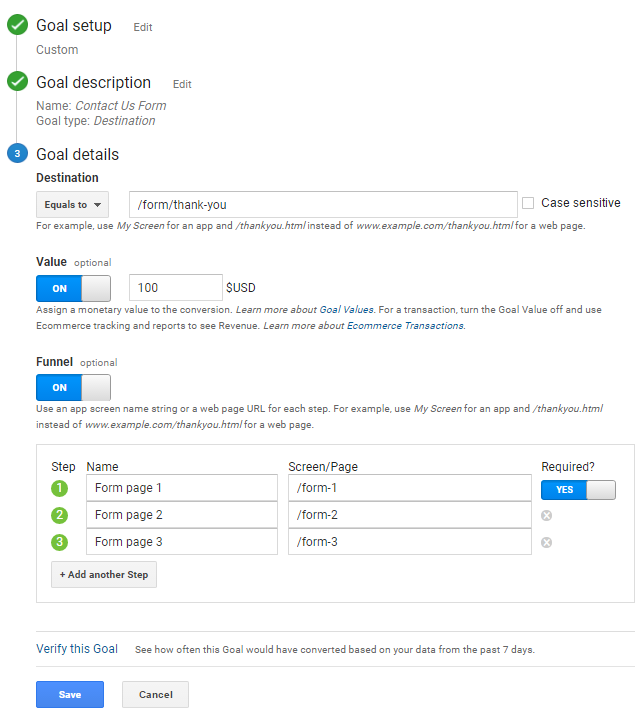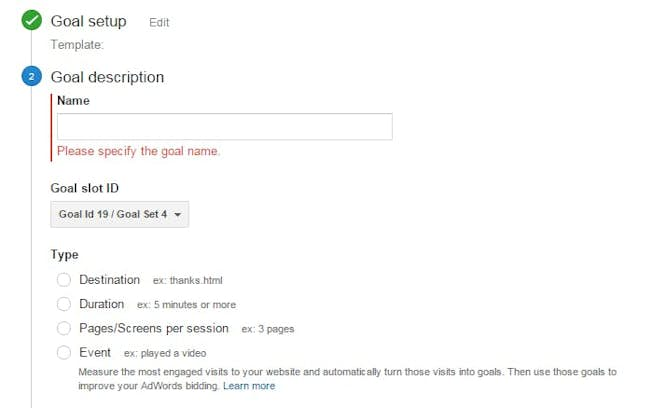Exploring What Data Is Google Analytics Goals Unable to Track
Exploring What Data Is Google Analytics Goals Unable to Track
Blog Article
Debunking Google Analytics Limitations: Uncover What Information Goals Can not Track
In the world of digital analytics, Google Analytics stands as a powerful tool that supplies important insights right into web site efficiency and customer behavior. From the intricacies of individual interaction with vibrant content to the complexities of cross-device customer journeys, these limitations shed light on areas that might stay covered from typical analytics viewpoints.

Customer Communication With Dynamic Material
Individual communication with dynamic web content plays a crucial function in understanding individual actions on internet sites and enhancing the general customer experience. By tracking individual communications with vibrant web content, site proprietors can get beneficial insights right into customer involvement, preferences, and actions - what data is google analytics goals unable to track.
Google Analytics provides different devices to track individual communications with vibrant material, such as occasion tracking and digital pageviews. Occasion tracking enables you to keep an eye on details customer activities, like clicking a switch or viewing a video, providing information on exactly how users interact with dynamic components. Virtual pageviews can be used to track communications that do not cause a new web page tons, giving a detailed sight of user interaction with vibrant web content. By examining this information, internet site proprietors can make educated choices to enhance individual experience and drive conversions.
Cross-Device User Journeys
How can contemporary analytics devices track the complicated courses individuals take across several devices in their online trips? Cross-device user journeys present a substantial obstacle for tracking and evaluating individual habits accurately. As customers interact with websites or apps making use of various tools such as mobile phones, tablet computers, and desktop computers, it comes to be crucial to recognize just how they relocate between these systems to enhance customer experience successfully.
Google Analytics faces limitations in tracking cross-device user journeys because of privacy worries and technological constraints - what data is google analytics goals unable to track. While it can offer insights right into specific tools' communications, tracking a smooth user trip throughout several tools remains an obstacle. This restriction can cause insufficient data and fragmented customer understandings, making it difficult for services to produce a unified sight of the consumer journey
To resolve this concern, services can use sophisticated analytics devices that supply cross-device tracking abilities, permitting them to obtain a more alternative understanding of customer behavior. By leveraging these devices, services can link the void in tracking cross-device individual trips and enhance their digital strategies for a seamless customer experience.
Offline Conversions and Attribution
As organizations browse the difficulties of tracking cross-device individual journeys, one more pivotal element to think about is the world of offline conversions and attribution in the realm of data analytics. While Google Analytics provides important insights right into on-line customer actions, it drops short when it pertains to tracking conversions that take place offline. This restriction postures a considerable difficulty for organizations that have both online and offline sales networks.
Offline conversions, such as acquisitions made in physical shops or through telephone call facilities, are important to recognizing the full consumer trip. Without the ability to associate these offline conversions to particular online communications, businesses might struggle to precisely measure the effect of their electronic advertising initiatives.
To address this space, businesses can check out different solutions such as incorporating CRM systems with on-line analytics tools or using one-of-a-kind promotion codes that can be mapped back to on the internet projects. By bridging the gap between online and offline information, organizations can gain an extra detailed understanding of their customers' habits and improve their overall marketing methods.
Individual User Identification
In the realm of data analytics, the capability to accurately determine individual customers across numerous online touchpoints is a crucial difficulty for businesses seeking to customize and enhance their marketing approaches. While Google Analytics provides beneficial understandings right into customer habits and interactions, it falls short in enabling the identification of specific individuals because of personal privacy worries and technological restrictions. Google Analytics utilizes one-of-a-kind identifiers such as cookies to track user sessions and actions, yet these do not relate to recognizing specific customers in an individual sense.

Data From Secure Pages
In spite of the raising frequency of safe and secure pages on web sites, getting information from these encrypted resources provides an unique obstacle for electronic analytics systems like Google Analytics. Safeguard web pages, suggested by HTTPS in the URL, secure data traded between the user's internet browser and the site's server my link to make certain privacy and protection. While this security is important for safeguarding delicate information, it additionally positions limitations for tracking customer behavior and event analytics data.
Google Analytics encounters challenges in collecting detailed info from secure web pages as a result of the file encryption procedures in place. As an outcome, particular data factors such as reference resources, keyword searches, and even some customer communications may not be fully recorded when users access a web site with a secure connection. This restriction can impact the accuracy and completeness of the data evaluation, bring about voids in understanding individual habits and choices on safe and secure web pages.
To navigate this obstacle, electronic experts might require to explore alternate monitoring approaches or utilize various other devices especially designed to gather insights from protected pages. By adjusting approaches to suit these constraints, businesses can still acquire useful analytics in spite of the restrictions offered here are the findings by encrypted links.
Final Thought
In final thought, Google Analytics has limitations in tracking user interaction with vibrant material, cross-device individual journeys, offline conversions, specific user recognition, and information from protected pages. In spite of its important insights, Google Analytics might not offer a full picture of customer interaction throughout different touchpoints.
Customer interaction with dynamic web content plays an essential duty in recognizing user actions on web sites and enhancing the total individual experience. By tracking customer interactions with vibrant content, internet site owners can get valuable insights right into customer involvement, preferences, and actions.
Google Analytics uses special identifiers such as cookies to track customer sessions and behavior, yet these do not correspond to identifying specific users in an individual feeling.
As an outcome, specific data points such as reference resources, keyword searches, and even some customer communications may not be fully recorded when users access an internet site through a protected link.In verdict, Google Analytics has restrictions in tracking customer communication with dynamic content, cross-device individual trips, offline conversions, specific user identification, and data from protected web pages.
Report this page